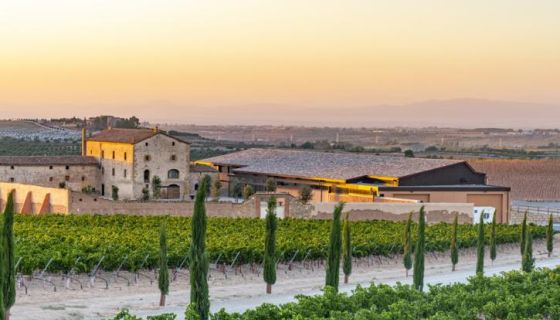From £22, 550 rand, HK$235, €29.90, 5,720 Japanese yen, $49.99, SG$70.90, 329.95 Danish kroner, 319.90 Brazilian reais
Purgatory is where sinners go to atone for their misdeeds before ascending to heaven, but if they serve wine this good you might forgive them for lingering a while. Indeed, this Torres brand was inspired by 'disobedient friars' that were exiled to an 18th-century estate (pictured above), where they apparently made wine while making amends.
The 2019 vintage is a sacril-icious blend of Garnacha, Cariñena and Syrah delivering sleek black fruit alongside evocative earthiness. It's softly tannic, with ready complexity for drinking now, but the core concentration to reward up to two decades of cellaring.
Not only is it a great wine – I scored it 17, with previous vintages scored as high as 18 by our Spanish specialist Ferran – but it comes from the relatively obscure denominación of Costers del Segre, which has an intriguing history of its own.
Today, there are 4,000 hectares (9,900 acres) of vines in this region, but before phylloxera devastated European vineyards in the 19th century, there were more than 100,000 hectares. The revival started in the 1960s when it became an important area for growing grapes for Cava, especially for the Raimat brand. The main focus would therefore have been traditional varieties such as Macabeu and Xarello, but international interlopers such as Chardonnay and Cabernet Sauvignon were also introduced.
As a result, when the DO was drawn up in 1986, 16 white wine varieties and 13 reds were permitted, including among others such unlikely bedfellows as Riesling, Viognier, Pinot Noir and Malbec. You can see the full list if you read the DO regulatory document (in Spanish), which is a form of purgatory in itself. For a more digestible version, check out Ferran's excellent guide to Costers del Segre, written in 2021.
Anyway, such divergence of varieties suggests something of an identity crisis for the region. Indeed, while there is a tasting committee for the DO, the document advises merely that a typical red should have 'aromas of fruits, vegetables and flowers' and a balanced taste with 'persistence greater than five seconds'.
By these criteria, the 2019 vintage of Torres Purgatori is typical indeed, but of course that doesn't say much. But as Ferran observes, Costers del Segre is an appellation of 'innovation rather than identity'.
The blend is certainly innovative, for Spain at least, where Syrah is not indigenous. Otherwise, the winemaking is modern and largely straightforward, with barrel maturation for 15 to 18 months in French oak, of which 40% was new. Torres is an accomplished wine producer, responsible for some of Calatunya's most revered reds, including Mas La Plana and Grans Muralles. Purgatori can be added to that list.
The Torres family are equally accomplished at marketing – the attractive label illustration shows barrels being spirited away by angels, which was supposedly the explanation given by those disobedient friars whenever wine mysteriously went missing – and they have market-leading sustainability credentials too (read more about that in Jancis's recent article Farm like there's no tomorrow).
If all that doesn't get Torres straight into heaven, then at least they'll have something excellent to drink in the meantime – and we can join them. The 2019 vintage of Purgatori is widely available across Europe, the US and Asia – although the 2020 is now on the market too, so it's worth stocking up on the 2019 while you can. Sinfulness never tasted so good.
Discover well over 100 more tasting notes on Costers del Segre wine in our database.















